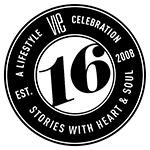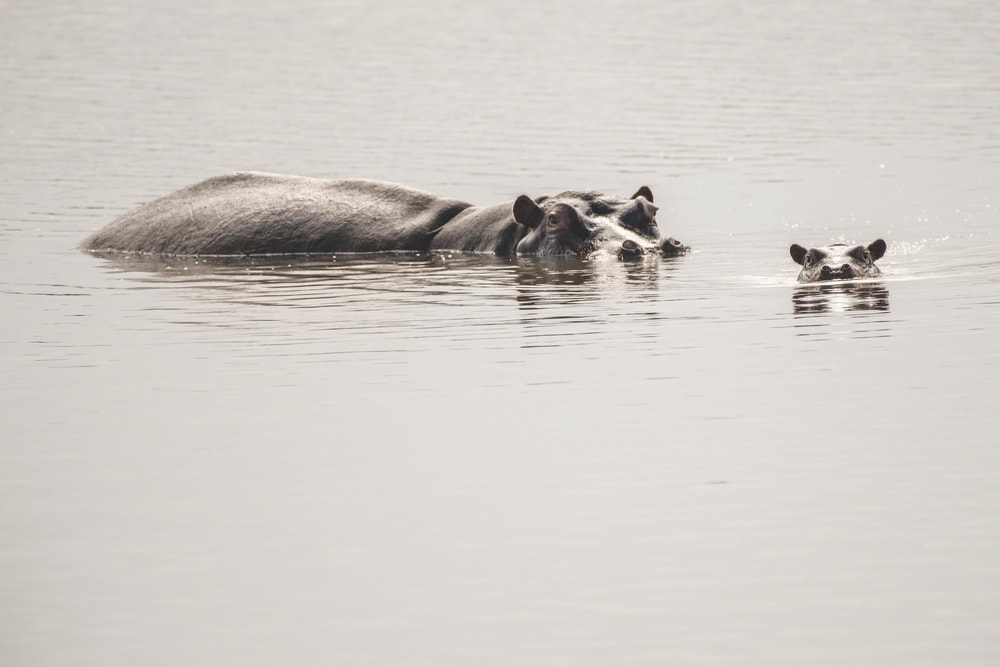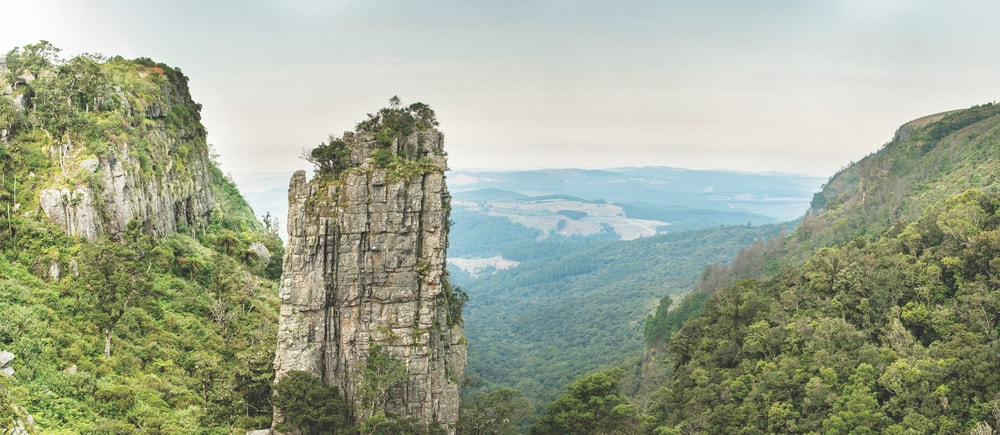
vie-magazine-mark-furniss-hero-min
A sweeping view of the majestic Blyde River Canyon in Mpumalanga, South Africa
Adventures in South Africa
Capturing Animals through a Lens
Story and photography by Mark Furniss
For anyone with a passion for nature and a love of the great outdoors, there can be no greater destination than the continent of Africa. The vastness and diversity of ecosystems are unmatched anywhere else on earth. My wife, Annett, and I have tasted what Africa has to offer through trips to the coast of South Africa and Mozambique and the deserts and plains of Namibia, and with every taste, the hunger to experience more gets stronger. Unable to withstand the hunger pangs any longer, we recently made the journey back to South Africa with a trip around Kruger National Park and the Mpumalanga region. The Kruger Park is one of the greatest nature reserves in the world, covering an area of approximately 7,722 square miles. This area encompasses many different ecosystems that sustain a vast variety of flora and fauna.
South Africa is the ideal destination for anyone wanting to dip their toes into what Africa has to offer. It is wild and exotic enough to pull most Westerners out of their comfort zone while being modern and sophisticated enough not to be too much of a culture shock. You can land at the airport in the sprawling cosmopolitan area of Johannesburg, with its population of 8 million, and within the space of a five-hour drive in your hired air-conditioned SUV, you can be at Paul Kruger Gate, the entrance to a world of magical wild wonder.
The Kruger Park is perfectly designed for self-driving tours with a variety of accommodations, from exclusive private rest camps to self-catering tented camps. There are pros and cons to all, but to get the most out of what the park has to offer, it may be best to do a bit of each. With this in mind, we decided to kick the trip off with a slice of luxury at Rhino Post Safari Lodge, situated just a half-hour drive away from the park entrance. In this short drive to the lodge, we passed a huge troop of baboons, herds of impalas, a bask of crocodiles, and a tower of giraffes (I intend to attempt to use the correct collective noun for all the animals in this piece!). If this was the first half hour, we could barely imagine what the rest of our trip would have in store. The benefit of staying in the private lodges is that everything is provided for you: luxury accommodations, beautiful food, and an experienced ranger to take you on game drives, often in areas of the park exclusive to your lodge.
- A herd of African elephants at sunset.
- Giraffes graze from acacia trees while two zebras appear to keep watch.
- A hippopotamus swims with her young calf.
- An impala checks out photographer Mark Furniss on the savanna.
There are strict guidelines for anyone visiting the Kruger Park, one being that you must be in the fenced rest camps before nightfall and not leave before sunrise. The only option for witnessing the park at night is with an experienced ranger. Luckily, we arrived at the lodge just in time to make the evening game drive with our designated ranger, Charl. Rhino Post is situated in the south of the park, with a high concentration of big cats such as leopards and lions. Sightings of lions are especially plentiful in the evening as they emerge from the bush to take advantage of the heat absorbed by the tarmac roads during the day. There is no guarantee of wildlife sightings in the park—in fact, if you were to drive every road and side road in the park, you would only see about 7 percent of it. But Charl was able to locate animals that would have been missed by the untrained eye, such as a tiny bush baby and a chameleon camouflaged in a tree. He also knew where the best hangouts were for lions and was able to bring us face-to-face with a huge male lion. You could easily underestimate the power of a lion while he’s slumbering, but when you witness his jaws yawning not six feet from the back of your open-top Land Cruiser, you truly appreciate why he’s at the top of the food chain!
Over the next couple of days, we witnessed such spectacles as large herds of elephants, an amorous pair of lions, and a lovely close encounter with a mother hyena and her cubs.
After the drive and a fantastic dinner, we were personally escorted back to our private chalet, as it was not uncommon for leopards to be skulking about the camp. We were then left to reflect on the events of the day and rest in preparation for what was to come. Over the next couple of days, we witnessed such spectacles as large herds of elephants, an amorous pair of lions, and a lovely close encounter with a mother hyena and her cubs. We also spent a memorable afternoon relaxing on our private riverside deck reading and bathing in a roll-top bath while bushbucks grazed beside us and a golden-tailed woodpecker hammered away in the tree above.
After a couple of days, it was time to reluctantly leave the luxury of Rhino Post and head approximately five hours north to Olifants Rest Camp. From there, we were on our own. Olifants is one of many basic but perfectly comfortable government-run camps. The government camps offer reasonably priced self-catering accommodations with plenty of amenities around the camps, such as a shop and a restaurant, maybe even a pool in some of them. The drive there was beautiful and no less fruitful than the previous days with fantastic wildlife sightings. Although the accommodations were a little underwhelming after being spoiled at Rhino Post, the setting of the camp was spectacular. It is nestled atop a cliff that overlooks the meandering Olifants River where elephants and waterbucks can be seen from time to time emerging from the bush savanna to take refreshment in the water. Although at the government camps you are a free agent and able to come and go as you please within daylight hours, it is still possible to book activities otherwise not permitted without being accompanied by a ranger. We took advantage of this service and arranged a walk along the river bank with a ranger named Patrick.

A zeal of zebras grazing on the savanna
Patrick was delighted to hear that we were interested in both flora and fauna as he was a keen botanist and was able to wax lyrical about the local plant life without the pressure of tracking down the “Big Five.” Nevertheless, we still had a stroll past a large bloat of hippopotamuses wallowing in the shallows and witnessed a giant bull elephant appear from the bush for refreshments downstream.
After Olifants, we pushed on further north toward Mopani Rest Camp. The park became much quieter, which was great for us, but I have to say that the crowds don’t know what they’re missing. There aren’t many big cats around, but they are here, and that makes the sightings all the more special. The vegetation and landscape change as you go, and the varieties of wildlife change with them. As we approached Mopani, we were cutting it tight to reach camp before sundown when a herd of buffalo decided to cross the road in front of us. The herd must have been a hundred strong and they were in no rush. In these situations, you just have to be patient—you wouldn’t want to argue with a buffalo! Luckily, we made it through the gates by the skin of our teeth.
Then, at the opposite end of the clearing, this large, bushy-maned head popped up out of the grass and eyeballed us, and then a second one did the same next to him. They then both dropped back down in unison. “OK, that’s it; they’ve seen us. They’re gone!” Abel exclaimed confidently.
Once in the camp, we arranged a morning bush walk for five o’clock with one of the camp rangers. My alarm went off at four thirty, and looking out of the chalet window, I noticed it was pouring rain. The choice between a warm bed and going for a walk in the rain at five in the morning was not difficult for Annett, but the fear of missing something made me get up. I met the still sleepy-looking ranger, Abel, at reception along with two South Africans who had also managed to wrench themselves out of bed. We drove in the icy rain for an hour in an open-top Land Cruiser to the start of the walking trail. After walking for around ninety minutes we had seen very little wildlife, but Abel had identified and explained in depth the digestive waste of several different animals—to the point that I now think I could confidently tell you the age and sex of an elephant purely by looking at a pile of dung. At this stage Abel decided it was time for breakfast. While tucking into our dry cheese crackers and juice boxes, I was starting to think Annett had the right idea. Then, from nowhere, a low rumbling sound seemed to vibrate the ground around us. Abel’s eyes lit up. “OK, lion, let’s go!” Crackers and juice were quickly thrown in the bag and off we went. What I didn’t expect was that we were going in the direction of the sound. This didn’t seem like a good idea, but Abel was the guy with the rifle, so we best follow him. Not only were the rumbling sounds becoming louder, but now they were also coming from different directions, meaning there was more than one lion. My heart was beating like crazy. We reached a clearing in the bush about the size of half a soccer field that was covered in tall grass. Abel motioned for us to stand behind him and whispered, “They’re here.” He then mimicked the sound of a panting lion. Then, at the opposite end of the clearing, this large, bushy-maned head popped up out of the grass and eyeballed us, and then a second one did the same next to him. They then both dropped back down in unison. “OK, that’s it; they’ve seen us. They’re gone!” Abel exclaimed confidently. Sure enough, as we trekked back to the vehicle, the tracks of the running lions could be seen clearly on the ground. When I returned back to camp with the adrenaline still pumping through my veins, I recalled the excitement of the morning with Annett. To this day, I don’t think she believes me.
- Lisbon Falls is a popular site for visitors in Mpumalanga.
- When a herd of cape buffalo blocks your path, it’s best to wait for them to clear out!
- Nyalas, like this female, can generally be seen in the early morning and late afternoon.
- Pinnacle Rock is a massive quartzite structure that juts from Driekop Gorge near the town of Graskop.
- Sunsets in Kruger National Park are not to be missed.
After Mopani, we headed to the most northerly camp in the park, Punda Maria. This is probably the smallest and least visited of all the camps, but it’s also the most charming. The entire area around it has the greatest variety of vegetation in the whole park, with thick woodland and a scattering of mighty baobab trees. Again, there is not the density of the big crowd-pleaser animals of the south, but they do all pass through, and along with the trees comes a vast array of birds and smaller critters. While there, we took a drive up as far north as you can get to Crook’s Corner where the Luvuvhu and Limpopo Rivers converge and the countries of South Africa, Zimbabwe, and Mozambique meet. Crook’s Corner gets its name from its past as a haven for those who had no great wish to look into the eyes of the law: think gunrunners, ivory poachers, outlaws, and anyone else who may need to escape over an international border at a moment’s notice. The shady history of the area belies the paradise that awaits you there. Swarms of butterflies flutter by under the dappled light coming through yellow-barked fever trees while colorful lilac-breasted rollers and bee-eaters fly past. Warthogs forage in the undergrowth while fish eagles patrol the rivers and dinosaur-sized crocodiles line the banks. After spending two days in this heaven, it was time to leave Kruger Park via the Punda Maria Gate. But we were not done with South Africa yet; we were heading to the town of Sabie to explore Blyde River Canyon and the Panorama Route.
Blyde River Canyon is credited with being the world’s third-largest canyon, behind the Grand Canyon in the United States and Fish River Canyon in Namibia, but it might be the world’s largest “green canyon” due to its lush subtropical foliage. The whole area is scattered with immense geological spectacles, cascading waterfalls, and breathtaking vistas (hence the Panorama Route moniker). The area is also deeply entrenched in the history of South Africa. The route is the same one that General Louis Botha used to flee from the English army during the Anglo-Boer War. It was also the site of a great gold rush during the late eighteenth century, and many of the small towns in the area were established during that time. Pilgrim’s Rest, about twenty-two miles north of Sabie, is a fully restored gold-mining town that is classified as a national monument. The whole town feels like it has been preserved in a time capsule and to this day holds the South African National Gold Panning Championships.
This was a perfect end to a perfect trip, with experiences and memories to last a lifetime, from heart-pounding excitement to transcendent wonderment in equal measures. Our hunger was sated, for now, but it won’t be long before the desire to taste the delicacies of Africa draws us right back again.
— V —
Mark Furniss is an Irish photographer based in the western region of Connemara. He specializes in landscape, nature, and travel photography and shoots in both digital and analog. Visit MarkFurnissPhotography.ie to see more.
Share This Story!
KEEP UP WITH THE LATEST STORIES FROM VIE













































































































































